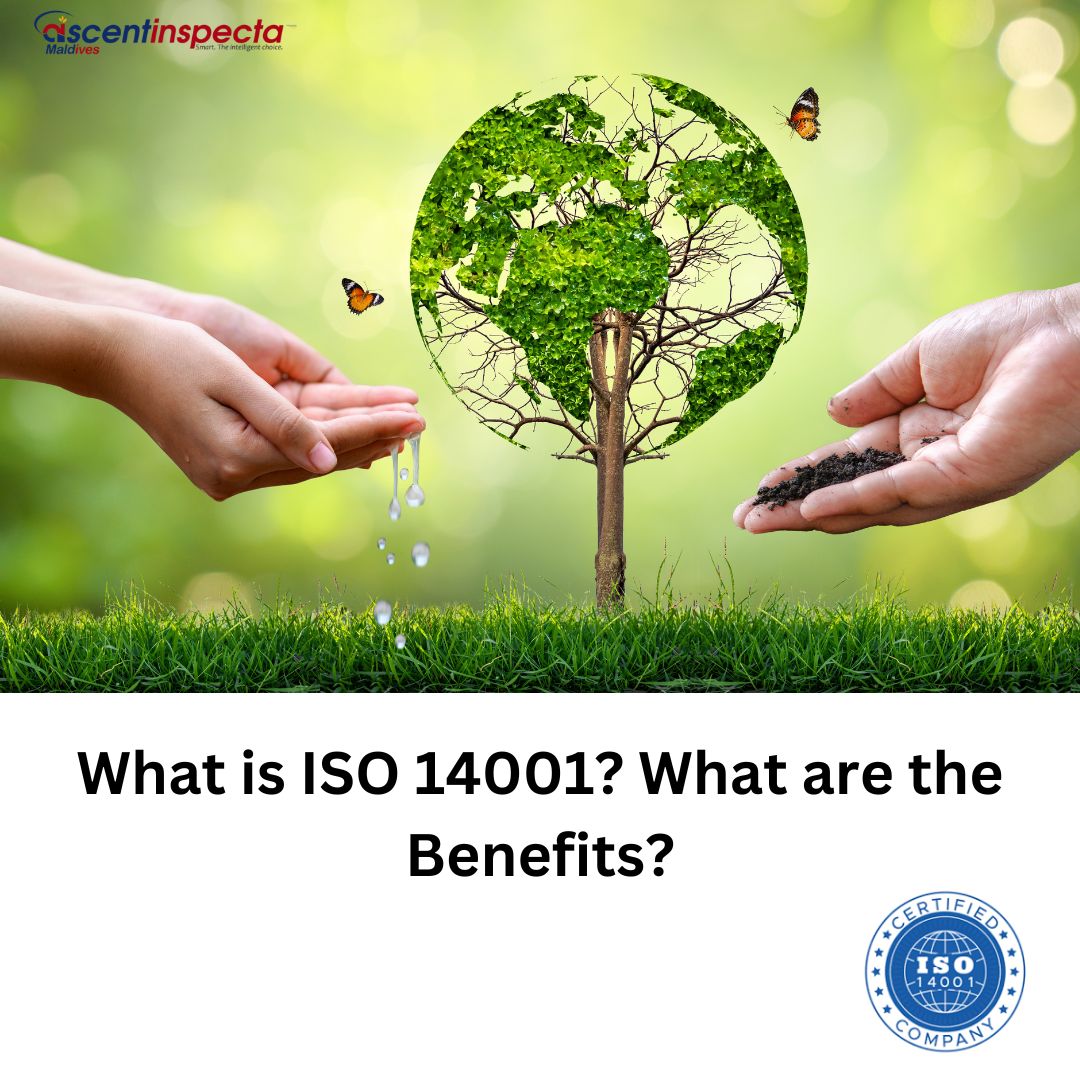Blog Details

Published: May 19, 2025
What is ISO 14001? What are the Benefits?
In an age where environmental sustainability is no longer optional but essential, organizations are increasingly turning to globally recognized standards to ensure they manage their environmental responsibilities effectively. One of the most widely adopted standards is ISO 14001, a cornerstone of environmental management that helps businesses minimize their environmental footprint, comply with regulations, and improve overall environmental performance.
This blog explores ISO 14001, its structure, benefits, and the steps your organization can take to become certified.
What is ISO 14001?
ISO 14001 is an international standard developed by the International Organization for Standardization (ISO) that specifies requirements for an effective Environmental Management System (EMS). First published in 1996 and revised most recently in 2015, ISO 14001 is part of the ISO 14000 family of standards, which focuses on various aspects of environmental management.
The goal of ISO 14001 is to help organizations enhance their environmental performance through more efficient use of resources and reduction of waste, gaining a competitive advantage and the trust of stakeholders.
Key Elements of ISO 14001
ISO 14001:2015 is based on the Plan-Do-Check-Act (PDCA) cycle and includes the following core elements:
- Context of the Organization: Understand internal and external issues that can impact the EMS and define its scope accordingly.
- Leadership: Top management must integrate the EMS into the organization’s core business processes and ensure clear roles and responsibilities.
- Planning: Identify environmental aspects, legal obligations, and risks and opportunities; then set objectives and plans.
- Support: Ensure proper resources, training, communication, and documentation to sustain the EMS.
- Operation: Control processes, plan for emergencies, and meet environmental requirements.
- Performance Evaluation: Monitor, measure, analyze, and assess EMS performance.
- Improvement: Continually improve the system, address nonconformities, and take corrective action.
Why is ISO 14001 Important?
Environmental concerns are now at the forefront of public consciousness and regulatory frameworks. Organizations that proactively manage their environmental impact not only ensure compliance with the law but also build trust with customers, partners, and communities.
ISO 14001 helps organizations:
- Comply with legal and regulatory requirements
- Manage environmental risks and impacts
- Improve resource efficiency
- Demonstrate environmental responsibility
- Strengthen stakeholder relationships
Benefits of ISO 14001 Certification
- 1. Improved Environmental Performance: Encourages a culture of continual improvement and efficient resource use.
- 2. Regulatory Compliance: Helps track and comply with environmental legislation.
- 3. Cost Reduction: Reduces waste and energy use, lowering operational costs.
- 4. Enhanced Reputation: Demonstrates corporate responsibility to stakeholders.
- 5. Market Advantage: Preferred by customers and business partners in many sectors.
- 6. Employee Engagement: Fosters pride and involvement in sustainability efforts.
Steps to Achieve ISO 14001 Certification
- Gap Analysis: Review your current environmental practices against ISO 14001 requirements.
- Plan Your EMS: Identify environmental aspects, set objectives, and establish roles.
- Implement the EMS: Train staff, document processes, and put controls in place.
- Internal Audit: Evaluate the EMS and identify non-conformities.
- Management Review: Ensure the EMS aligns with organizational goals.
- Corrective Actions: Resolve issues identified in audits and reviews.
- Certification Audit: Engage a certified auditor to evaluate your EMS.
- Continual Improvement: Maintain and evolve your EMS over time.
ISO 14001 and Other Management Systems
ISO 14001 follows the High-Level Structure (HLS), which makes it easy to integrate with other management systems such as:
- ISO 9001 (Quality Management)
- ISO 45001 (Occupational Health and Safety)
- ISO 50001 (Energy Management)
This integration streamlines processes and reduces duplication in audits, documentation, and training.
Common Challenges in Implementing ISO 14001
- Lack of Awareness: Educating employees and leadership about EMS importance.
- Resource Constraints: Especially challenging for small organizations.
- Complex Regulations: Understanding and applying local/international laws.
- Resistance to Change: Shifting organizational culture takes time and effort.
With proper planning and leadership commitment, these obstacles can be overcome.
Conclusion
ISO 14001 offers a practical framework for organizations to proactively manage their environmental responsibilities. It goes beyond compliance, driving operational efficiencies, improving brand reputation, and supporting long-term sustainability goals.
Whether you are a manufacturer, service provider, or governmental body, implementing ISO 14001 sends a powerful message to stakeholders: that you are committed to protecting the environment and conducting business responsibly.
If your organization is serious about sustainability, ISO 14001 is more than just a certification—it's a strategic investment in the future.
Comments Section
We’d love to hear your thoughts on ISO 18606 certification! Feel free to leave a comment below:
